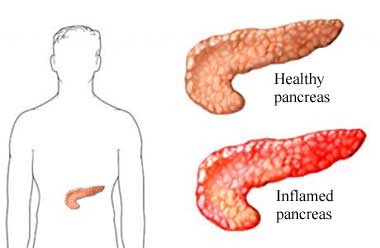Pancreatitis Buffalo NY
What is Pancreatitis?
Pancreatitis is inflammation of the pancreas. This condition usually begins at an acute stage, and in some cases, may become chronic after a severe and or recurrent attack. When the pancreas becomes inflamed, the digestive enzymes attack the tissue that produces them. One of these enzymes, called trypsin, can cause tissue damage and bleeding, and can cause the pancreas blood cells and blood vesseIs to swell.
With chronic pancreatitis, the pancreas may eventually stop producing the enzymes that are necessary for your body to digest and absorb nutrients. This is called exocrine failure -and fat and protein are not digested or absorbed. When chronic pancreatitis is advanced, the pancreas can also lose its ability to make insulin; this is called endocrine failure.
There are two stages of pancreatitis:
Acute pancreatitis:
This condition can occur suddenly, soon after the pancreas becomes damaged or irritated by its own enzymes. Although acute pancreatitis is not fully understood, its causes are usually gallstones or alcohol abuse. When gallstones pass through the bile duct, they may become stuck, causing enzymes to build up in the pancreas because they cannot drain through the duct, and damaging the pancreas. In the case of alcohol, the pancreas may be sensitive to the effects of excessive alcohol. An attack may occur anywhere from a few hours or one to two days after drinking alcohol. The amount of alcohol consumed will vary from person to person. Other less common causes of this condition are: excessive leveIs of fat particles in the blood, mumps, drugs, surgery, heredity, and idiopathic (unknown cause). Acute pancreatitis affects about 80,000 Americans every year.
Chronic pancreatitis:
This stage of pancreatitis begins as acute pancreatitis, and becomes chronic when the pancreas becomes scarred. This condition is usually due to years of excessive alcohol consumption, but may also develop from other causes of pancreatitis.
What are the Symptoms of Pancreatitis?
The symptoms begin as those of acute pancreatitis:
A gradual or sudden severe pain in the center part of the upper abdomen goes through to your back; this pain may get worse when you eat and builds to a persistent pain
Nausea and vomiting
Fever
Jaundice (a yellowing of the skin) due to blockage of the bile duct from the inflamed pancreas
Shock
Weight loss
Symptoms of diabetes mellitus
Most chronic pancreatitis is due to alcohol abuse and is already chronic at its first presentation. In rare cases this condition leads to cancer of the pancreas, an unchecked growth of abnormal cells in the pancreas.
What Should I Do If I Have Pancreatitis?
If your abdominal pain lasts more than 20 minutes, call your doctor or go to the emergency room. Your doctor will take a medical history, ask about your drinking history, and draw blood to test for pancreatic enzymes. You may also need to take pancreas function tests to determine the loss of pancreatic enzymes, a fecal fat collection test for evidence of malabsorption, and an ultrasound, CT scan or other test to determine pancreas damage. If you have unexplained weight loss that lasts more than a few weeks, call your doctor. This can be a warning sign of pancreatic cancer.
What is the Difference Between Acute and Chronic Pancreatitis?
Most cases of acute pancreatitis are mild and involve a short hospital stay to help heal the pancreas. Chronic pancreatitis is a much more persistent condition, and occurs more often in men than women.
What is the Treatment for Pancreatitis?
Your doctor will focus treatment on your nutritional and metabolic needs and on relieving your pain. Mild pain can be treated with analgesics. If the cause of acute pancreatitis is gallstones, you may have to have your gallbladder removed to prevent further attacks. If the bile duct is found to be enlarged, you may need an ERCP (endoscopic retrograde cholangiopancreatography) to drain it. An ERCP is a way your doctor can examine your pancreas, pancreatic duct, the common bile duct, and/or sphincter of Oddi. It involves passage of a long, narrow tube called an endoscope used to put X-ray contrast dye into the bile and pancreas ducts. In severe cases, surgery will be required to drain the pancreatic duct or to remove part of the pancreas.
Your doctor will also likely give you dietary guidelines to follow in order to reduce the amount of fat you eat, since your body has trouble digesting these substances. You may also need to take pancreatic enzyme supplements, which are in the form of a tablet, every time you have a meal. These supplements will help your body absorb food and help you regain some of the lost weight.
What Hope for the Future?
Most people who have Chronic pancreatitis have a good prognosis if they follow the required dietary chain and take their medications and required supplements. If their condition was caused by drinking, they will have a positive outcome if they stop drinking and continue follow-up treatment.



